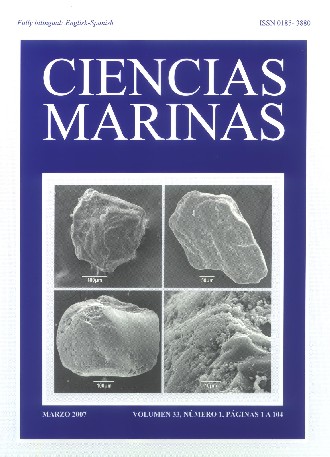Textural characterization of beach sands from the Gulf of California, Mexico: implications for coastal processes and relief
Main Article Content
Abstract
Grain size determinations were carried out for 54 beach-sand samples from the western (n = 25) and eastern (n = 29) coasts of the Gulf of California, Mexico, in order to establish the relationship among coastal processes, relief, and grain size parameters for both areas based on grain size distributions. This was done because both coastal areas are controlled by marine processes and the geomorphology of the coast, since fluvial discharges are negligible in the distribution of sands. In general, sands from the western coast are mainly coarse, moderately sorted, near-symmetrical with leptokurtic and very leptokurtic distributions. Correlations between grain-size parameters for the western coast are controlled by less selectivity in the coastal processes to concentrate fractions in a specific range of sizes, a narrow coastal plain, and compositional differences in the sands due to the heterogeneous lithology and the presence of carbonate shells. Eastern coast beach sands are medium, moderately well sorted, near-symmetrical with mesokurtic to leptokurtic distributions. Correlations between grain size parameters for the eastern coast are controlled by longshore current drifts in a northwestern direction and a wider coastal plain compared to the western coast.
Downloads
Article Details
This is an open access article distributed under a Creative Commons Attribution 4.0 License, which allows you to share and adapt the work, as long as you give appropriate credit to the original author(s) and the source, provide a link to the Creative Commons license, and indicate if changes were made. Figures, tables and other elements in the article are included in the article’s CC BY 4.0 license, unless otherwise indicated. The journal title is protected by copyrights and not subject to this license. Full license deed can be viewed here.

